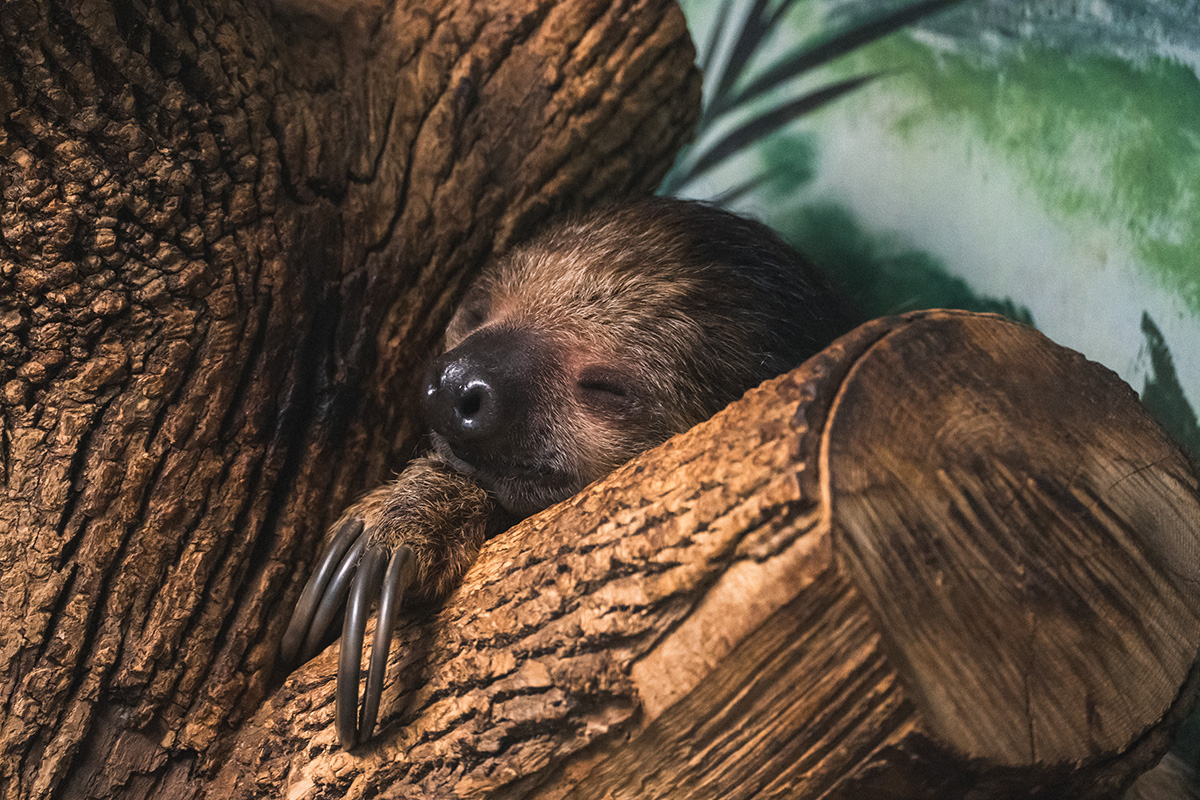Zooming In (and Out) at the Zoo
Kaela Elliott offers tips on how to highlight your favorite enclosure animals with the Tamron 70-300mm and 150-500mm VC telephoto lenses.
Share the article:
More Photo Tips | Video Gallery | Photo Gallery | Enewsletter sign-up
By Jenn Gidman
Images by Kaela Elliott
Kaela Elliott used to rely solely on prime lenses to help her with her passion: photographing local wildlife and zoo animals. Then, during a difficult stretch of health issues, Kaela and her husband started watching National Geographic’s Secrets of the Zoo series while she was recuperating, and Kaela realized she needed a zoom lens to better help her capture her favorite subjects.
Kaela’s husband delivered, taking her to pick up a Tamron 70-300mm Di III RXD telephoto zoom, a purchase she soon followed up on with the 150-500mm Di III VC VXD ultra-telephoto zoom, both for her Sony mirrorless camera system. “I fell in love with the 70-300mm,” she says. “Once I was well enough, we started heading to all the zoos within driving distance of our Ohio home, which is where I witnessed the power of that lens. The focal-length range is so versatile for when I want to zoom in and out on the animals in their enclosures, and it’s super light and compact. I can spend all day at the zoo and never be weighed down.”
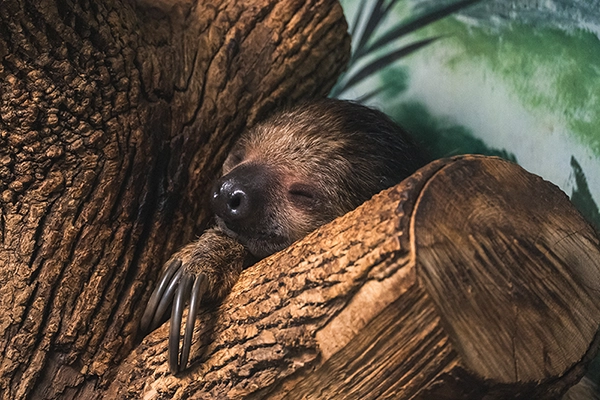
70-300mm (235mm), F6.3, 1/250 sec., ISO 8000
Click image to view larger
When Kaela is shooting at the longer end of her 70-300mm, she appreciates the compression the lens offers. “The glass or chain link separating zoo visitors from the animals just melts away in front of my camera,” she says. “Meanwhile, the 150-500mm offers me extra reach for when the animals are further back in their enclosures.”
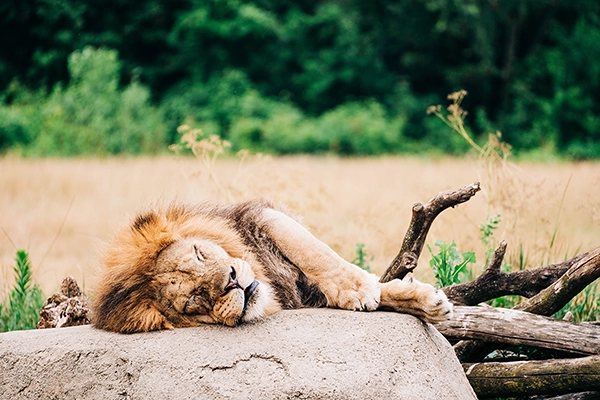
70-300mm (300mm), F6.3, 1/500 sec., ISO 640
Click image to view larger
These days, Kaela is at the zoo at least once a week. “When I take pictures of the zoo animals, I want them to look natural,” she says. “I’m always trying to find moments of realness and uniqueness, including moments where I can show off an animal’s personality.”
KAELA’S QUICK TIPS
Strive for more dynamic photos.
They have a lot of flamingos at the Columbus Zoo right out in the open. This time I was intent on finding a flamingo that was actually doing something, not just standing there. This one was preening itself, so it was the perfect candidate. What’s funny about this shot is that I accidentally underexposed it, but it worked out well, because it was late evening, so the background turned really dark, making the flamingo pop even more.
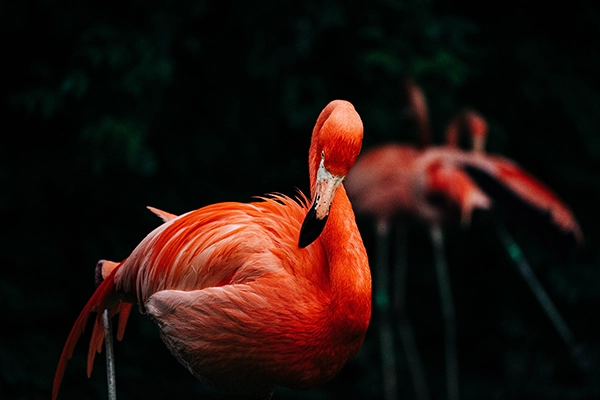
70-300mm (250mm), F6.3, 1/250 sec., ISO 8000
Click image to view larger
Zoom in, zoom out.
Sometimes the enclosures at the zoo aren’t the most aesthetically appealing, or maybe I want to make it appear as if the animal I’m photographing is out in the wild, in which case I’ll pull in tight with my Tamron telephoto lenses to get close-ups of the animals. Or, conversely, I sometimes want to include more of the enclosure, in which case I’ll zoom way out. The giraffe enclosure at the Columbus Zoo is a perfect example of that. It doesn’t even look like it’s in a zoo. That’s when a zoom lens like the 70-300mm or 150-500mm VC comes in so handy, because you can decide on the fly how much of the environment you want to incorporate into your photos.
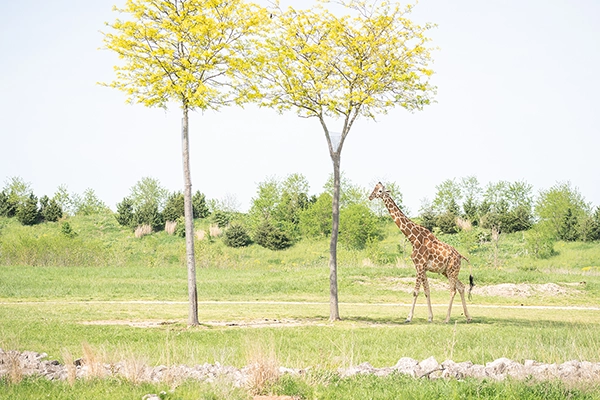
70-300mm (119mm), F6.3, 1/1000 sec., ISO 400
Click image to view larger
Set up for continuous shooting.
One of my longtime goals has been to photograph a female cardinal. Many people gravitate toward the males, with their bright red plumage, but I think the females’ coloring is so unique. I finally got my chance locally, in a true wildlife shot, when I spotted this one. She practically posed for me, even fluffing up her feathers.
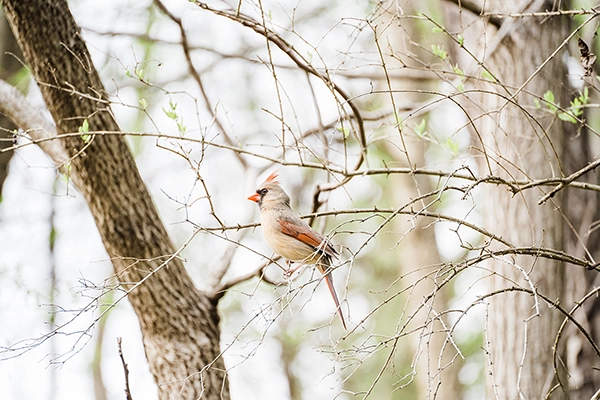
70-300mm (282mm), F6.3, 1/250 sec., ISO 1250
Click image to view larger
I almost always have my camera set for continuous shooting when I photograph birds. If you’re taking pictures of a sleeping lion, you obviously don’t need to do so, but being able to take several rapid-fire shots in a row with a bird that’s hopping and flying around is key to getting that one shot you’re happy with.
Focus your attentions, and patience.
The Cleveland zoo has two Amur tiger cubs right now. When we visited there earlier this year, they were both sound asleep under a tree. I said to myself, ‘We drove three hours to see them, and they’re not even going to move?” Instead of leaving to go check out the other exhibits, however, we decided to just stay, observing them.
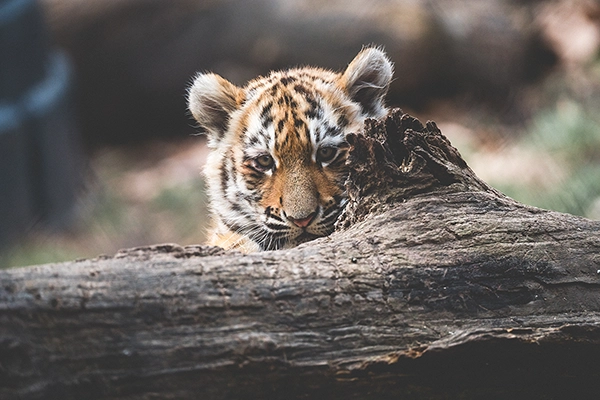
150-500mm (500mm), F6.7, 1/1250 sec., ISO 1250
Click image to view larger
About 20 minutes later, they started stirring—and then it was game on, with plenty of running and playing. This was the one photo here taken with my Tamron 150-500mm VC lens, giving me the reach I needed to get in close during their activity. If you’re really set on getting pictures of a certain animal or animals, plan on sticking around that particular exhibit for a good amount of time instead of spreading yourself thin around the entire zoo. I promise, you’ll likely be rewarded for your efforts!
To see more of Kaela Elliott’s work, check out her website and Instagram.
Is your Tamron News subscription up to date? Click to subscribe to all editions of Tamron News featuring how-to tips, new product news, contest announcements and inspiration!
More Photo Tips | Watch Videos | Learn More About Tamron Lenses | Photo Gallery
